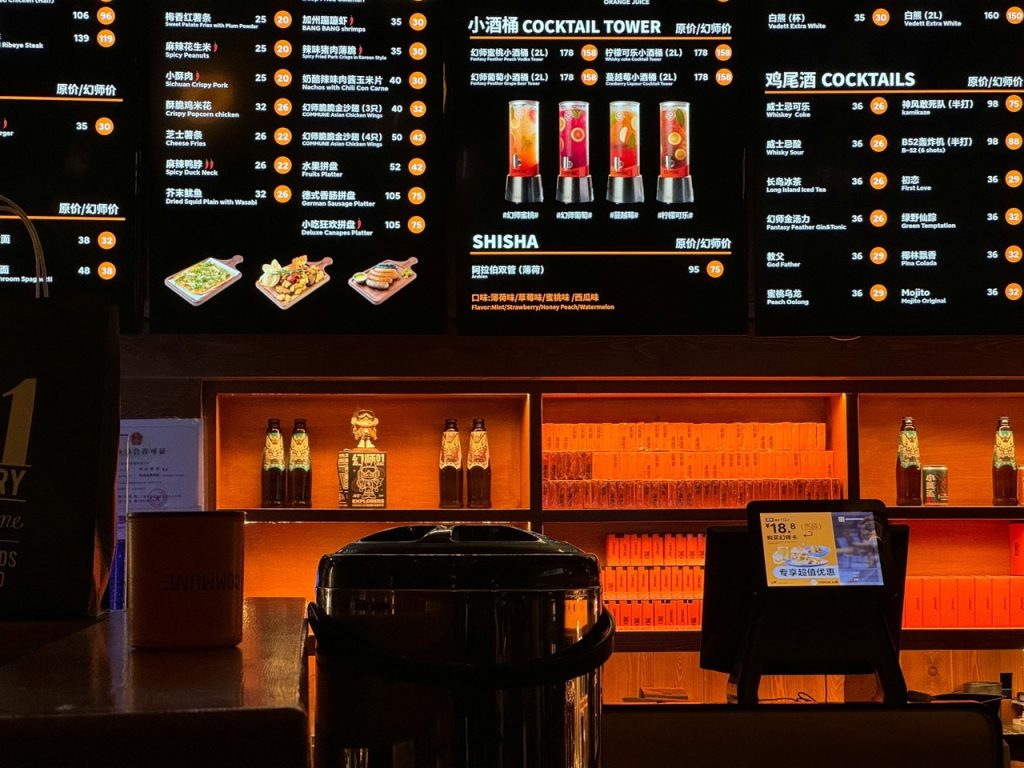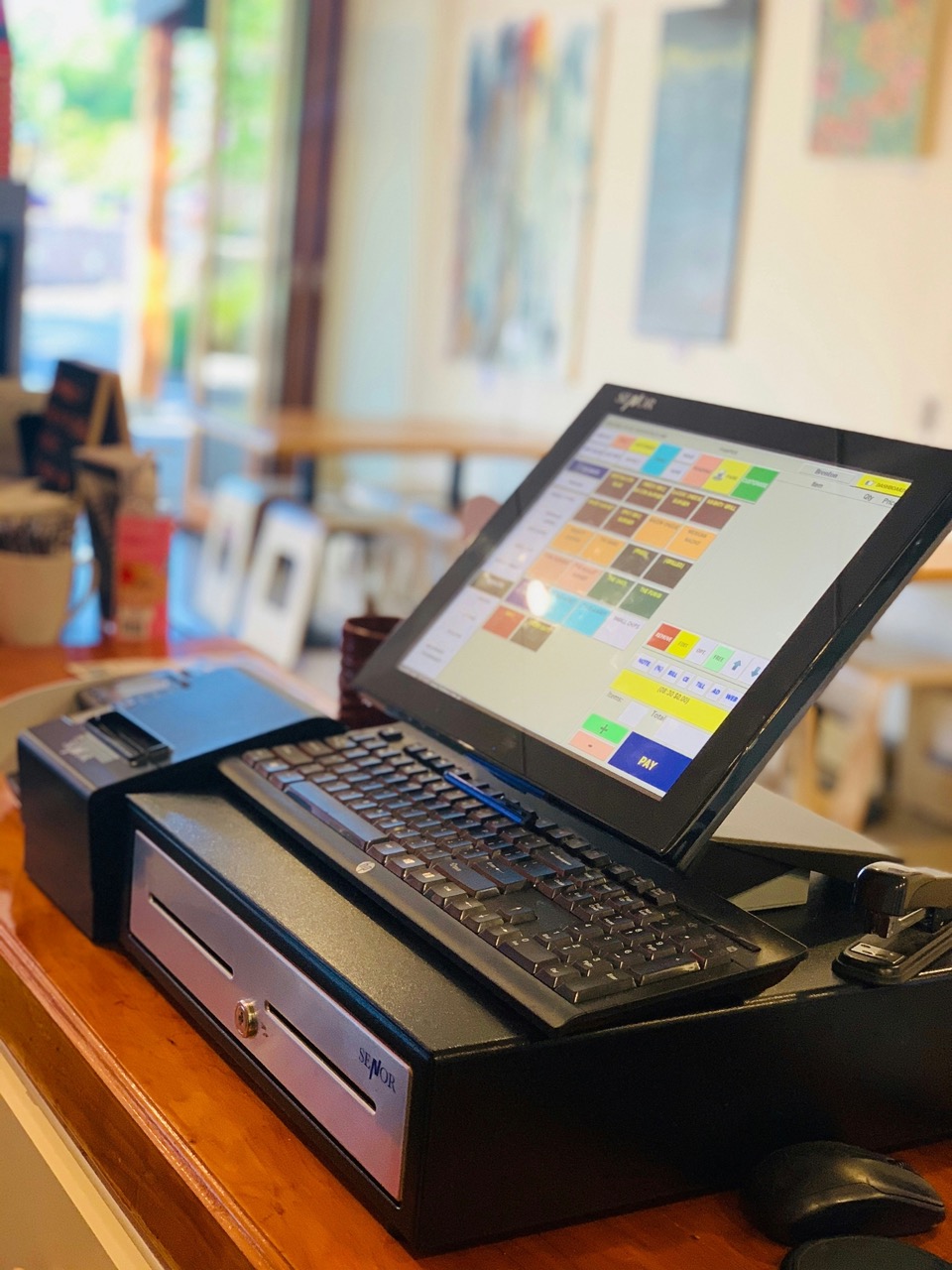During the past decades, the restaurant industry has changed radically, primarily due to the rapid development of technology. In the age of digitalization of the world, innovative Restaurant Order Management systems have become an essential part of a successful restaurant business. In this post from Celadonsoft, we will examine which innovations influence this field and how they shape future tendencies.
The place of technology in modern restaurant business

Modern restaurants are faced with serious challenges, including fierce competition, diversity of consumers’ preferences and the need for personalization of services. In this context, technologies are not just auxiliary tools, but also key market drivers. Let us consider some key points:
- Customer experience enhancement: Technology helps restaurants provide more convenient and personalized services.
- Process optimization: Digitalization and automation reduce time costs and increase employees’ productivity.
- Data gathering and analysis: Modern systems allow restaurants to analyze customer preferences, streamline menus and improve service.
In this article, we do not just want to depict the impact of technology on Restaurant Order Management, but also discuss key innovations that define the current state of the market. We will cover the following questions:
- How do traditional order processing methods give way to digital solutions?
- What are the benefits of online platforms and mobile apps?
- How do artificial intelligence and machine learning impact demand forecasting and personalization?
We will also examine important areas such as automation of cooking processes, use of data analytics in making intelligent decisions and the impact of emerging technologies on the overall efficiency of restaurants.
Next, we will look to the future and discuss the expected innovations and the social and ethical considerations of introducing technologies to the restaurant industry. Finally, we hope readers can see how emerging technologies shape the restaurant business license and how this business is preparing itself for the challenges that lie ahead.
Order management systems: digital to analog
Today’s restaurant industry is seeing revolutionary changes in terms of the use of new technology in managing orders. Let us reflect on how traditional order-processing methods are being substituted by automated systems.
Traditional order processing
- Manual input: Waiters used to take orders on paper, which increased the likelihood of errors.
- Phone orders: The customers would normally place their orders over the phone, which was very demanding and required expertise.
- Reservations: Paper tables were utilized to reserve tables, and it was very difficult for large restaurants.
As the work being done by both clients and restaurateurs is increasing, traditional processes have been found to be cumbersome and wasteful. Most of them are now switching to automated Restaurant Order Management software.
Move to automated systems
- Electronic panels: It is possible to order via special tablets or terminals, saving time and preventing mistakes.
- Integration with POS systems: Order aggregation with payments management system, convenient for customers and personnel.
- Smartphone apps: One can place the order from any location, significantly reducing the convenience level and order speed.
Mobile apps and sites: a new customer engagement way
Restaurants have been made redundant by technology to be used as places of customer engagement through mobile sites and apps. Consider the benefits of this with Celadonsoft.
Ease of selection and ordering
- Ease of information access: Customers are able to view menus, recipes, and reviews without visiting the restaurant.
- Personalized recommendations: Software is aware of customer habits and suggests dishes from past orders.
- Easy ordering: A simple application design enables you to place orders with an easy click.
Role of mobile applications in enhancing the client experience
- Loyalty Schemes: Apps make it possible for restaurants to promote special deals and discounts, which invite repeat ordering.
- Pre-order facility: Allowing users to pre-order, thus saving their time and managing the queue.
- Feedback: Effective review systems enable restaurants to learn from customers’ feedback and improve their service.
Not only do the roles of online and mobile apps simplify the process for ordering food, but they also contribute their share to establishing a deeper, more personalized relationship with individuals, which transform the nature of engagement throughout the industry.
The integration of artificial intelligence and machine learning
Celadonsoft: One of the most significant trends of modern innovation in the restaurant industry is the integration of artificial intelligence (AI) and machine learning (MS) into Restaurant Order Management systems. These technologies open up new possibilities for restaurants and their customers as well.
Advantages of AI and MS application:
- Provide personalization: AI algorithms can learn customer preferences, from their past orders and behavior. This allows restaurants to provide personalized recommendations, which significantly increases the chances of follow-up orders.
- Demand forecasting: Analyzing future demand for food and drinks allows restaurants to make intelligent purchasing and stock decisions. Using past data, AI is able to predict which foods will be in demand on particular days or during certain seasons.
- Inventory optimization: The use of AI in inventory Restaurant Order Management systems allows for the minimization of costs by avoiding surpluses or shortages. This also means better use of resources and reduced food wastage.
The use of AI and MS is fast becoming a fundamental element of the strategy of restaurants focusing on improving their competitiveness along with customer experience.
Kitchen automation: from robots to smart devices
Automation of the cooking process is another important trend in the restaurant industry. The advent of technologies such as robotics and smart devices is radically changing the way kitchen operations are viewed.
Key points of kitchen automation:
- Speed up the cooking process: Robots and automated systems can perform repetitive tasks, such as chopping ingredients or blending drinks, which saves the cooks time and effort. This allows you to focus on the creative process and the quality of the dishes.
- Quality improvement and maintenance: Automation provides high stability and quality of each serving. The robots follow the recipes and standards given, which minimizes the possibility of errors caused by human factors.
- Smart kitchen appliances: Smart equipment such as multi-functional oven cabinets and microwave ovens allow you to create innovative dishes easily. They can be integrated with the Restaurant Order Management system and automatically cook or heat dishes on demand.
Each one of these innovations significantly increases restaurants’ efficiency as a whole, reduces time spent on customer service, and improves customer satisfaction. Integrating such technologies is not a trend, but a necessity for the restaurant business, which is eager to stay at the peak of modern standards.
Data analysis: informed decisions
With the current age of digitalization, data is turning out to be a valuable resource for restaurant business. They allow not only tracking current trends, but also making informed decisions. Some of the features that show how data analytics is becoming the key to the restaurant industry are as follows:
- Service improvement: Feedback mechanisms allow identifying service strengths and weaknesses at each step of the customer journey. Waiting time data analysis can help to streamline through speeding up the service.
- Optimization of menu: Individual dishes’ sales data allow successful positions and failed positions to be ascertained. Seasonal customers’ preferences opened another alternative through adjusting the menu.
- Demand planning: Utilize past data in forecasting demand for food on given days or given times. Improved inventory planning and minimizing ingredient waste.
- Key measurements for analysis:
- Speed of processing orders: determines how quickly you can respond to client requests.
- Average check: helps to analyse how to maximize profitability per client by means of menus and promotions.
The use of automated data analysis software not only increases clarity of processes, but also allows for better fact-based decisions rather than instinctual ones.
The future of restaurant technology: trends and predictions
While technologies are developing rapidly, the restaurant industry must face new challenges and possibilities. Forecasts for the next several years show intended innovations:
Growth of artificial intelligence application:
- Greater efficiency because of automated service systems.
- Individual offers based on the analysis of customers’ behavior.
Use of blockchain technologies:
- Transparency of supply chain, allowing to guarantee products’ quality.
- Potential for customers to track the origin of each ingredient, which is made valuable to the consumers.
Social responsibility and sustainable development:
- Orientation of business processes to environmental needs, care for the future of the planet.
- Utilization of technologies for minimization of food waste through the use of smart accounting systems.
Ethics of technology implementation:
- Issues of data privacy and guarding customer information.
- Eliminate algorithmic bias to avoid discrimination.

These trends point to the need not only for technology adoption, but also for its ethical implementation. The restaurant industry, adhering to new technologies, must not neglect social responsibility and customer service. Therefore, the future of the restaurant industry will be determined not only by technology, but also by regard for human values.
Conclusion: Trends and challenges for the restaurant sector
Celadonsoft: Technology is increasingly a part of the restaurant business in the world today, and this brings with it both new opportunities and very significant challenges. Look at the main points that summarize all that was stated:
Summary of progress made:
- Technology as the backbone. The restaurant industry has witnessed a lot of transformation according to order handling enhancement. Automation of processes, mobile app usage and AI implementation have been standards that boosted customer experience.
- Pivoting to data. Embracing analytics for making informed decisions has been critical. Capturing metrics on customers’ preferences and behavioural trends has been a top material for achieving competitiveness.
Relevance of embracing new technologies:
- Flexibility and adaptability. The restaurant businesses that have managed to stay flexible and adapt to new things have improved their market position immensely. One has to remember that technology is still evolving, and keeping pace is as much an opportunity as it is a necessity.
- Training personnel. Remember that it’s only through staff training that new technologies can be introduced in the restaurant industry. Employee training investment is already a trend that’s becoming common.
Challenges ahead
- Ethics and security. With more technology availability come ethical issues, e.g., customer data protection and the use of personal information. The restaurants are not only to adopt technology, but also to be open in their dealings with customers.
- Staffing issue. Automation of processes can make certain industries redundant. A balance must be found between efficiency and social responsibility, generating new roles for personnel.
Finally, the restaurant industry is at the forefront of technology, opening up new ways for consumers to interact and making processes more efficient. It all depends on whether firms are prepared to embrace rapid change and be open to using technology in an attempt to deliver value to both customers and employees. It is too big a factor to overlook in an accelerating world.



Leave a Reply
You must be logged in to post a comment.